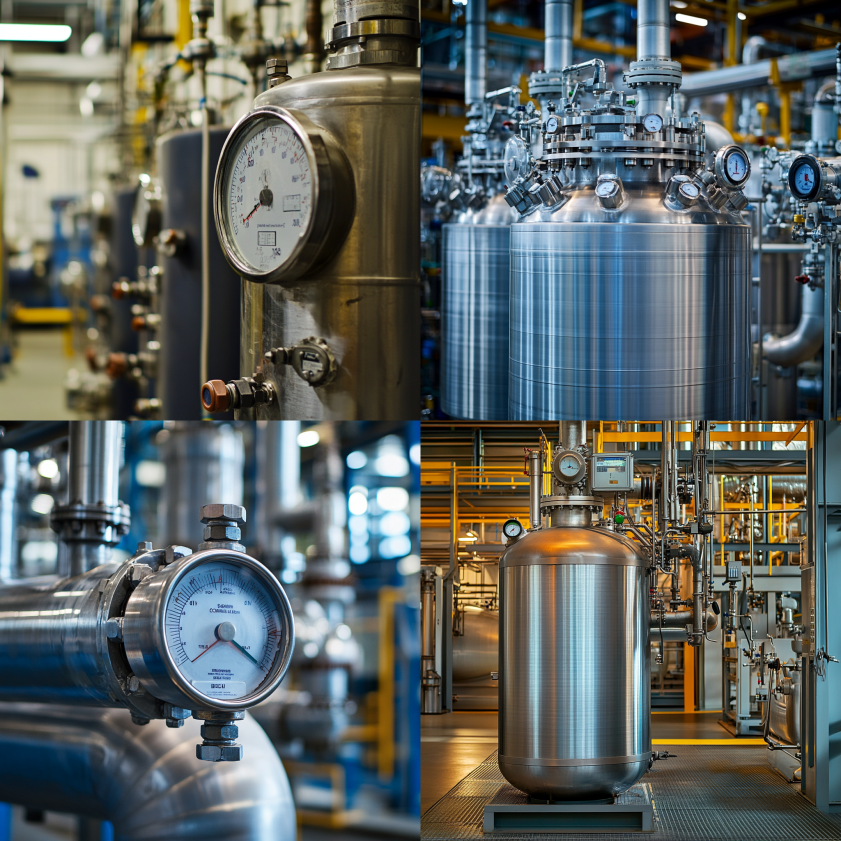
Pressure vessels are essential to many industries, from petrochemical plants to food processing facilities. While most people associate pressure vessels with large, cylindrical tanks towering over industrial sites, the reality is that these vessels come in many sizes, including very small ones. If you’re an engineer, contractor, or facility manager designing a small-scale system, one crucial question arises early: What is the minimum size for an ASME pressure vessel?
This blog post explores ASME pressure vessel size considerations, clarifies the concept of “minimum size,” and helps you determine when your vessel needs to comply with ASME Code Section VIII. Whether you’re building a lab-scale reactor or a compact compressor tank, understanding these rules is vital for safety, compliance, and performance.
The American Society of Mechanical Engineers (ASME) developed a comprehensive standard known as the Boiler and Pressure Vessel Code (BPVC). This code provides the guidelines used around the world to design, fabricate, inspect, and certify pressure-containing equipment.
Section VIII of the ASME BPVC governs pressure vessels that operate above 15 psig (pounds per square inch gauge). It’s divided into three subsections:
For most general-purpose applications, Section VIII, Division 1 is the applicable standard.
Designing according to ASME Code isn’t just about meeting technical specs. It’s about ensuring safety, meeting regulatory requirements, and achieving certification that instills trust in your equipment. Non-compliance can lead to system failures, fines, or denied insurance claims.
For more about our ASME capabilities, visit the Red River homepage.
Contrary to common belief, ASME does not prescribe a strict minimum physical size for a pressure vessel. Instead, it defines minimum pressure and design conditions that determine whether a vessel falls under the scope of Section VIII.
The key factor for ASME applicability is the internal pressure. Per Section VIII, the code applies to vessels that:
This means a vessel as small as a coffee mug in volume can be subject to ASME regulations—if it’s designed to contain or withstand the necessary pressure.
Some guidelines often referenced in industry, but not directly defined as hard rules, suggest:
However, these rules of thumb should never be relied on solely. Instead, you must refer to Paragraph U-1(c) and UG-2 of Section VIII for specifics about exemptions and scope limits.
It’s not just about pressure and volume—several design variables affect whether your vessel must comply with the ASME Code.
Thin-walled designs, especially in small vessels, require greater scrutiny. Material strength, corrosion allowance, and weld integrity all play a role.
ASME defines pressure vessels as containers meant to hold gases or liquids at a pressure substantially different from ambient. Depending on the fluid being stored, compliance requirements vary:
Even if internal pressure is low, external vacuum, wind, seismic, or mounting loads may push your vessel into the realm of ASME compliance.
Some states and localities require all pressure vessels to be ASME certified—regardless of size or application. Always check with local AHJs (Authorities Having Jurisdiction).
To better understand how size interacts with ASME scope, here are a few real-world examples of small vessels that often require certification:
Used in oil and gas labs, these may be only a few inches in diameter, but often operate at pressures over 3,000 psi, necessitating ASME design.
Even small air tanks for compressor systems over 5 gallons must often comply, especially if they serve commercial facilities.
Small-volume vessels handling corrosive liquids under pressure (e.g., chlorine) are likely subject to ASME Section VIII, particularly if placed in industrial environments.
For detailed help designing your small pressure vessel, contact Red River’s team.
While ASME does not provide a specific minimum size, it clearly outlines pressure-based thresholds for when a vessel must comply with Section VIII.
Here’s what you need to remember:
Red River specializes in the design and manufacturing of pressure vessels. We also fabricate related items such as prefabricated spools and skid packages.
Reach out to us today and experience the Red River difference. Where American-made products and American Values come together, we care mo
No. ASME does not set a hard minimum size. Vessels are judged by operating pressure, intended use, and service conditions rather than dimensions.
The Code applies to vessels operating above 15 psig internal pressure or subjected to external pressures, such as vacuum service.
Some small tanks may be exempt under Section VIII Paragraph UG-2, depending on their use, volume, and pressure. Always verify exemptions based on your design.
Yes. If the tank operates above 15 psig or is used in specific applications (e.g., hazardous material storage), it will likely require ASME compliance.
Even vessels under vacuum may need ASME design. External pressure introduces different stress considerations that often require certification.
Refer to ASME BPVC Section VIII, U-1 and UG-2, or consult a certified engineer or pressure vessel fabricator.
This depends on the industry, local regulations, and insurer requirements. In many cases, using non-certified vessels can expose you to significant liability.
Red River offers end-to-end ASME vessel design and fabrication services, including engineering consultations for small-scale equipment
In the realm of industrial solutions, Red River emerges as a pioneer, offering a diverse range of custom-engineered products and facilities. Among our specialties is the design and production of Custom/OEM Pressure Vessels, meticulously crafted to meet individual client requirements, ensuring performance under various pressure conditions. Our expertise extends to the domain of prefabrication, where Red River leads with distinction.
The company excels in creating prefabricated facilities, modules, and packages, reinforcing its stance as a forerunner in innovation and quality. This proficiency is further mirrored in their Modular Skids offering, where they provide an array of Modular Fabricated Skid Packages and Packaged equipment. Each piece is tailored to client specifications, underlining their commitment to delivering precision and excellence in every project they undertake.